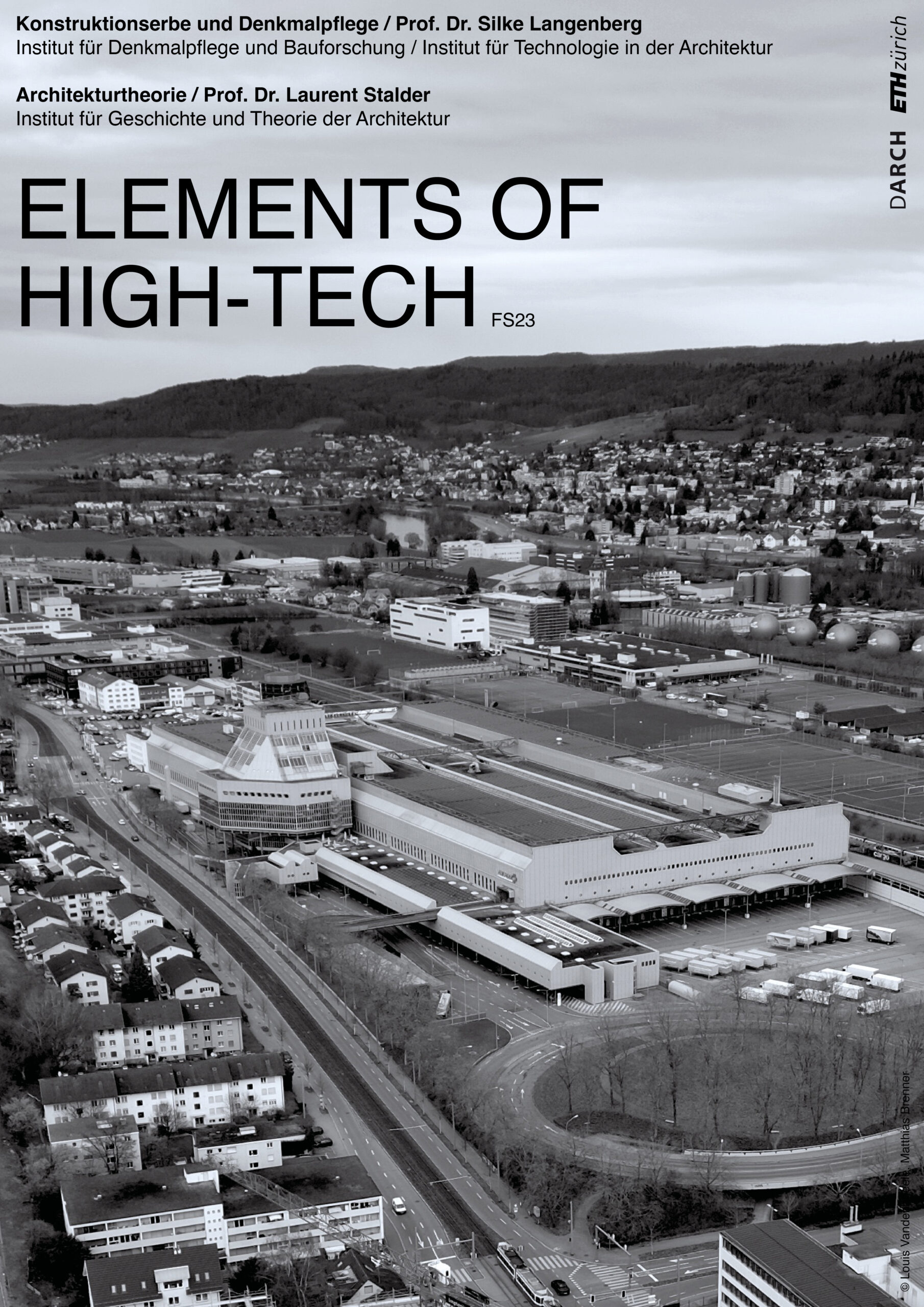
Lecture series in the spring semester 2023
In Collaboration with the Professorship for the Theory of Architecture, Prof. Dr. Laurent Stalder
Teaching Team: Prof. Dr. Silke Langenberg & Matthias Brenner, Prof. Dr. Laurent Stalder & Dr. Davide Spina
This course focuses on a specific part of the architecture of the 1970s and 1980s, its architectural-theoretical analysis, and its properties and challenges associated with the preservation of such objects. This course is a collaboration between the Institute for the History and Theory of Architecture (GTA) and the Institute for Preservation and Construction History (IDB).
As part of the core course, challenges, as well as opportunities associated with the preservation of buildings from the High-Tech movement, are discussed and examined. Focusing on Swiss objects, this course examines High-Tech Architecture through the analysis of “things” or “elements” and the legal, material, and technical networks associated with them. Because underpinning the transformation of architecture over the last fifty years was not just a generic shift in our worldview, but also the introduction of discrete technological objects which functioned as vehicles for the ideological, cultural, and societal changes that we associate with the postmodern turn. In this regard, the role of High-Tech Architecture and its technical elements should be discussed.
For this purpose, in the first step, a part of the literature on the ontological, epistemological, and social politics of things and matter in general will be reviewed. The reading includes key works from the history of architecture, semiotics, actor-network theory, new materialism, and postmodern theory. In the second step, specific High-Tech construction details are examined on the object itself. They are photographed and documented by the students. This is supplemented by short archival research to evaluate planning documents and photos of the construction process. Furthermore, conservation strategies are to be discussed that consider today’s social, technological, and ecological parameters.
Students successfully completing the course will not only have acquired in-depth knowledge of high-tech architecture and its Swiss heritage but will also be able to read buildings from an object-oriented perspective.
Thursdays, 15:45–17:30 in room HIL C 10.2
Contact: Matthias Brenner